Last June, just a few weeks into my new job with LMEF, I came across a familiar sight at the Kline Wetlands… a ransacked turtle nest. This was just one of many.

A quick overview: Female turtles come up on land in the spring to excavate a small hole in the ground, drop in some eggs, and cover it back up. No mammalian nurturing here… the progeny are on their own at this point. Ideally, the turtles develop over the course of a couple months, hatch, dig their way up, and quickly get to water. But much more often than not, predators find the fresh eggs within a couple nights of their laying, and they chow down.
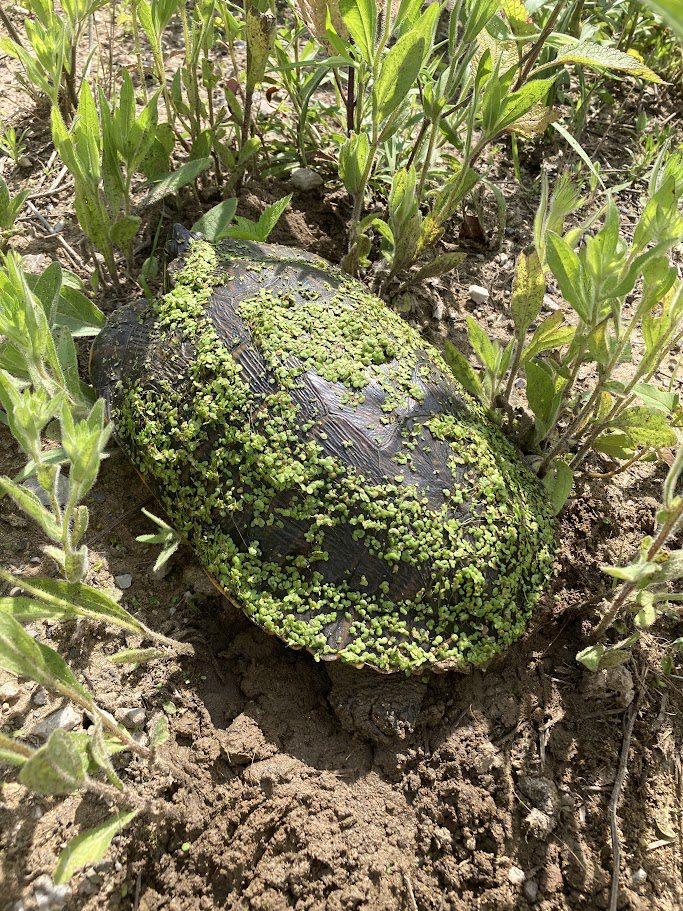
Now… I’m about to quote extensively from a scientific paper, because it lays the groundwork for where we are going with this. But if you stick with me, I promise that at the end of this story you’ll be rewarded with CUTE BABY TURTLE PHOTOS.
As these Canadian scientists note in a 2018 paper:
Freshwater turtles typically exhibit high life expectancy and mortality rates that are inversely related to age. High depredation of eggs and hatchlings in the wild results in low recruitment of early life stages. Some North American freshwater turtle populations experience nest predation rates approaching 100%…
Nest depredation can be high even in relatively unimpacted, “natural” areas, and predation rates may increase in anthropogenically impacted habitats where mesopredators experience increased food supply (e.g., Raccoon or Coyotes scavenging from waste bins or agricultural fields). Subsidized mesopredators can live at higher densities, because the excess food increases the carrying capacity of those habitats. This in turn puts greater pressure on prey populations, and high nest predation rates resulting from subsidized predation can severely reduce recruitment into freshwater turtle populations…
In North America, mammalian mesopredators are frequently observed depredating turtle nests. Common nest predators include Raccoon, Fisher, Gray Fox, Red Fox, River Otter, American Mink, Striped Skunk, Virginia Opossum, Eastern Wolf, and Coyote. Adult turtles are more rarely targeted by predators because many species can retract into their shells for protection. [I removed references/scientific names for readability]
Translation: we humans have created a racoon-opossum paradise, which is bad news for turtle reproduction. Especially on top of the rest that turtles have to deal with: our draining of wetlands, shell-crushing motor vehicles, and poachers snagging individuals for the pet trade.
So… what can we do?
A lot of the mortality seems to happen soon after egg laying. Predators find the nests within the first couple nights of laying. If the eggs can make it to hatching, perhaps we can boost the odds that one will make it to adulthood.
I found plans for turtle nest protection boxes from a Michigan non-profit, whose staff were generous with helpful tips. I then reached out to a former colleague of mine, Nathan Engbrecht, who’s a herpetologist for the Indiana Department of Natural Resources (as heard on NPR!). I confirmed with him the conservation strategy and legality of this initiative. He said we probably have about 5-7 turtle species in the lake.
We partnered with the good folks at Marshall-Starke Development Center, hiring their crew to build six boxes for us to try out at Lake Maxinkuckee. We dropped by the town park to test them out.

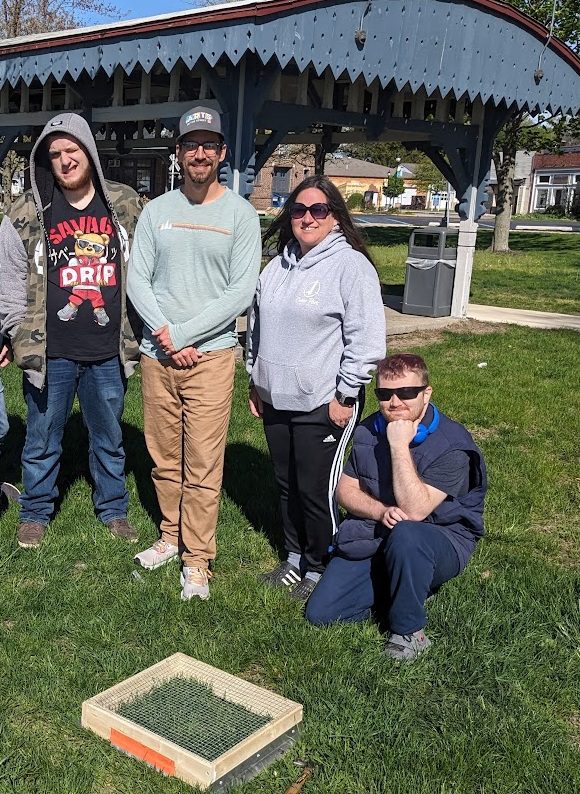
The boxes are anchored to the ground with metal stakes, and a small one-way flap on the lakeward side should allow hatchlings to escape.
Key to the operation is a timely deployment, so that’s where YOU come in. We need eyes on the ground looking for nests. Turtle mamas are good at covering their tracks, but they’ll be a small circular patch of disturbed ground several inches in diameter; however, that’s a close description of many other types of disturbance. Much better is to catch one in the act, or find tracks from their feet and tail.
So if you see one, please call or text us immediately and we’ll deploy the Turtle Action Response Team (“TART”? We’re still workshopping acronyms…). With permission, we’d be happy to also deploy these on private property. Also, let us know if you are available to help us deploy on short notice around the lake!
Well, no sooner did we take delivery of the boxes did I get a call from Crystal of the Culver Parks Department, who spotted a Map Turtle actively laying eggs in a hole on the slope near the piers.
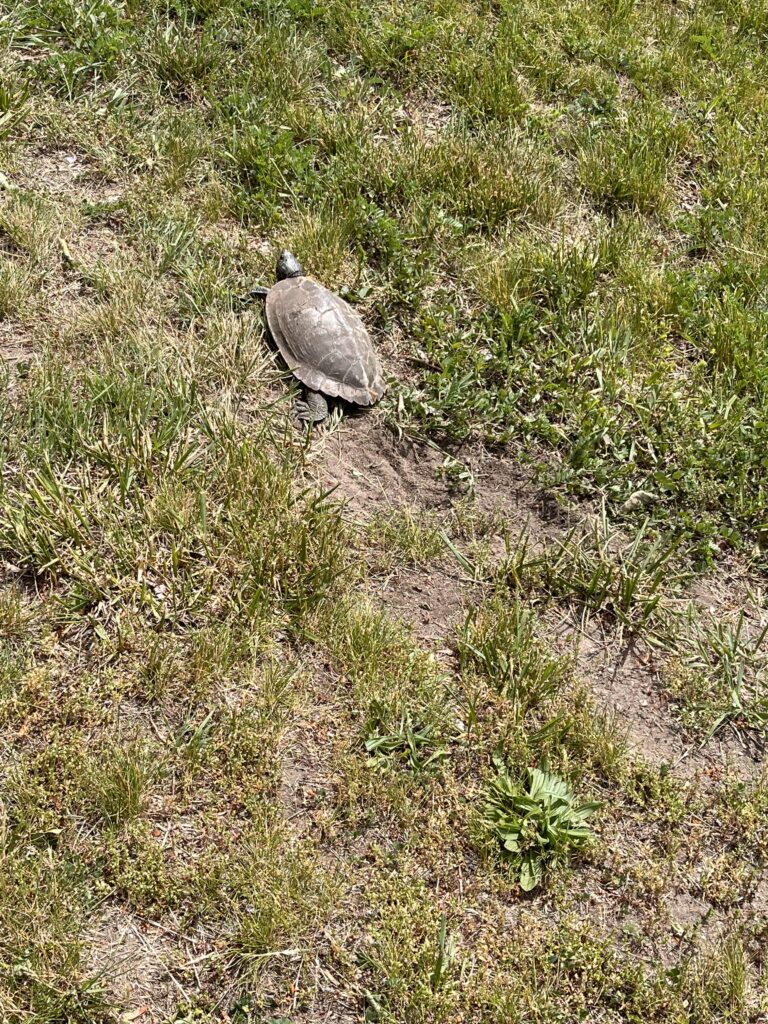
TART sprung into action! By the time we got there, mama was already done and gone.
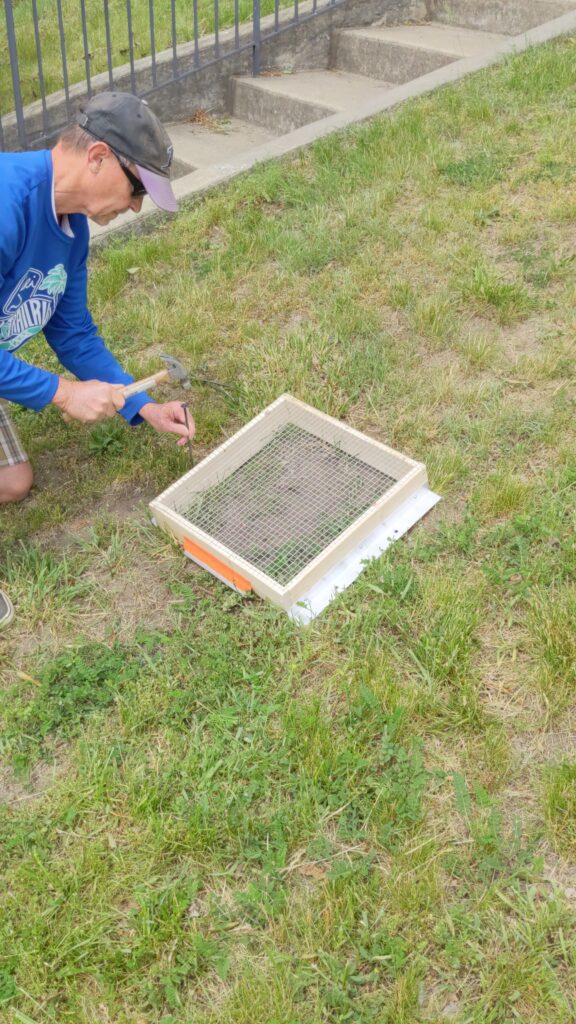
We secured a box over the nest and were busy patting ourselves on the back, when we stepped over to the concrete stairs and saw this…
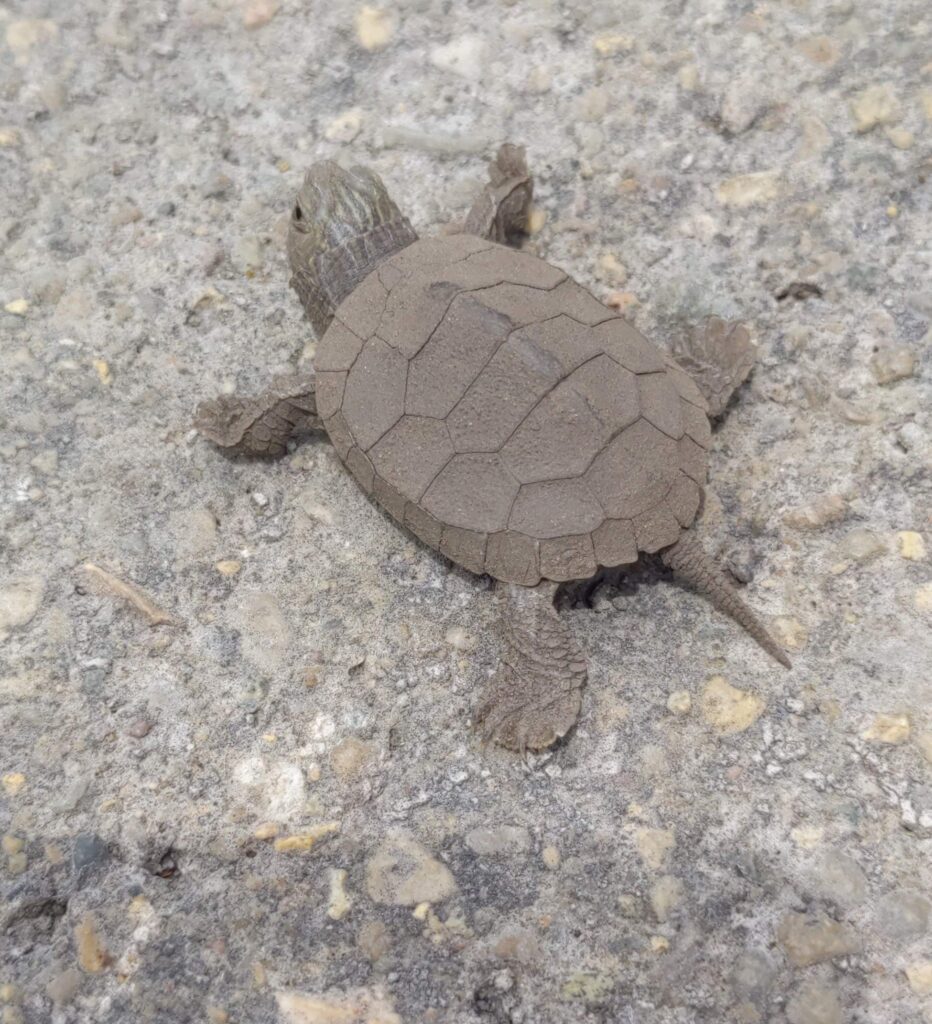
But… uh… WHAT?! This is way too early for baby turtles! They have an incubation period of a couple months… no way were turtles crawling out and laying in mid-March!
I reached out to Engbrecht, who solved the riddle for me: “those probably overwintered in the nest and just emerged this spring. That’s not the typical time of emergence (it’s typically late summer or fall), but in our region some nests will hatch underground in the fall and just stay below ground all winter, emerging in the spring.”
Amazing! Well, however they care to do it, we were happy to watch it happen. We traced the baby turtle trail back up to a nest at the top of the hill, which was just a tiny hole. Several babies were in the grass. We decided to let them be. The individual who had tumbled down a dozen concrete steps we decided to bring to the edge of the water, along with a sibling who was chilling on the bike path.
[some of these videos were not showing up when viewed via Apple iPhone… this should be fixed now]
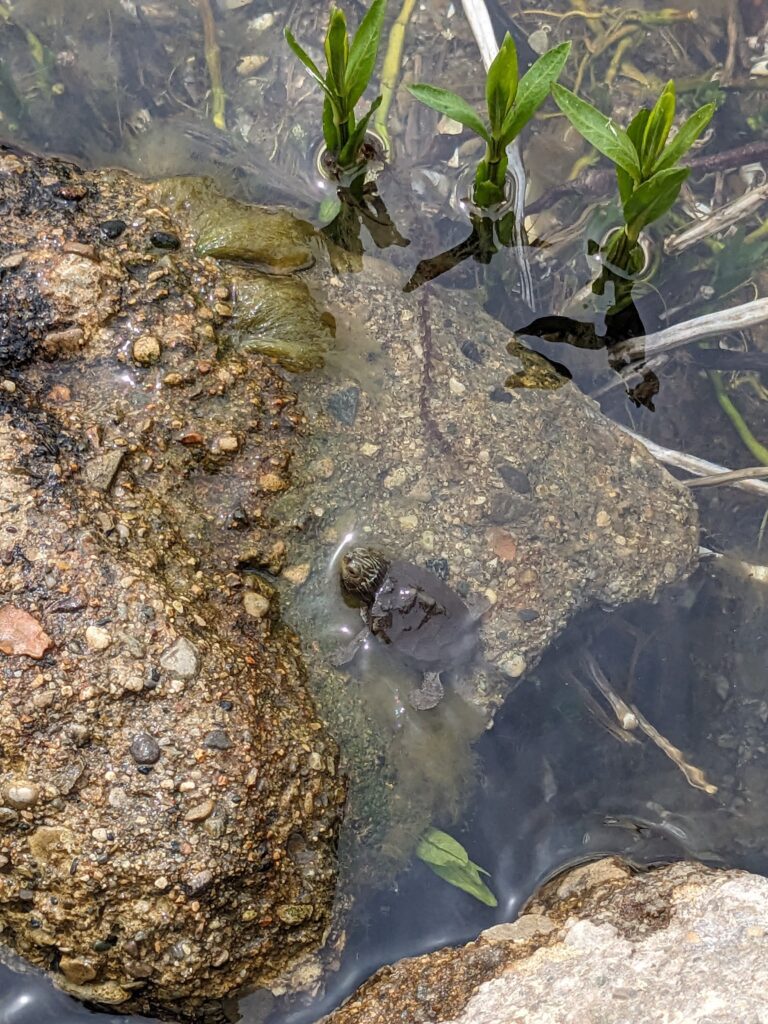
Will this work? Success is not assured, but given the factors at play, attempting to give turtles a little lift seems like the right thing to do.
If you see something, please let us know ASAP so that TART can be deployed!
Oh, and if you think of a better name… we’re all ears!

Hi, I’m Adam Thada, President of the Lake Maxinkuckee Environmental Fund in Culver, IN. I studied Biology (BS) at Indiana Wesleyan University and Environmental Science (MSci) at Taylor University. The last decade or so has found me in Northern Indiana, working in sustainability, environmental education, and ecological restoration.

Recent Comments